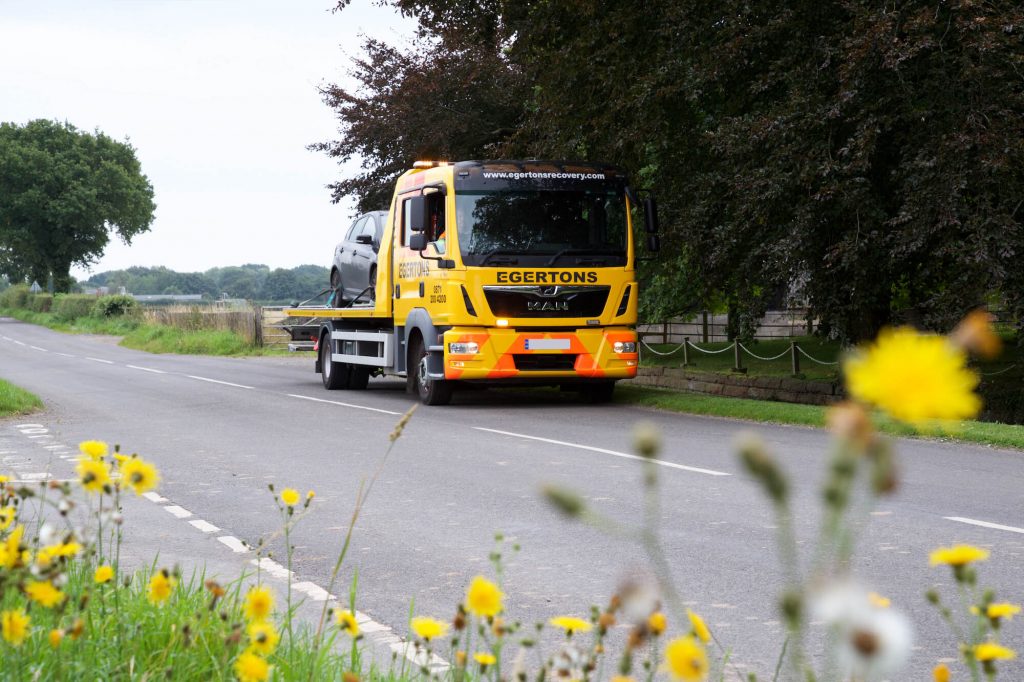As the clocks moved forward on March 27th, many fleet operators will be looking forward to the operational benefits of longer days and more daylight hours. However, whilst the benefits of brighter days are certainly worth celebrating, it’s still important for road users to be aware of the potential hazards that are associated with driving in these conditions.
According to the annual road casualties report from the Department for Transport (DfT), a high number of road accidents happen in bright, clear, spring-time weather, with 13,855 accidents happening during daylight hours compared to only 4,250 accidents in the dark. What’s more, 22% of those accidents which happened in daylight hours were classified as ‘severe’, often caused when a driver’s view had been compromised by glaring sunlight.
Whether it be a sunrise, sunset or throughout the day, glare can physically block a drivers’ view of the road, however, this is something that many fleet operators may not necessarily be aware of as most would naturally assume that when the weather is seemingly fine, accidents are bound to be less likely than in otherwise adverse conditions.
With this in mind, let’s take a look at how exactly fleet operators and commercial drivers alike, can all follow some top tips on keeping all road users safe during spring-time weather.
Be aware of spring showers
Something that many UK drivers will already be aware of is just how quickly the British weather can turn, so much so that spring has become notorious for its sudden showers. But, what’s important to remember is that whilst this wet weather driving is a hazard in itself, it’s made even worse by low sun driving conditions.
In fact, as highlighted in the DfT report, the number of accidents on wet or slightly damp roads involving commercial vehicles had a much higher rate than flood, frost, ice or even snow. This simply is due to the sun reflecting off the damp surface, creating a stronger glare that makes judging stopping distances and seeing hazards even more difficult.
It also increases the likelihood of dirt and mud gathering on the windscreen, magnifying the suns glare and clogging view. Bearing this in mind, always keeping your windscreen wash topped up is also a best practice.
Ensure clear visibility
As opposed to regular high-street sunglasses, polarised sunglasses are coated with a chemical filter helps to cut glare, making them an effective tool in helping block the light waves which bounce off horizontal surfaces.
And of course, using a vehicle’s sun visor and keeping the windshield and dashboard clear (inside and out) are also helpful tools that will improve visibility when drivers are on the road.
Always keep a safe distance
As with many hazardous driving conditions, drivers should always keep an eye on how close they are to other vehicles around them – this is especially important for commercial vehicles sticking to the left-hand lanes and therefore constantly having other vehicles weave in and out of their paths.
In cases where the sun is impacting a drivers’ vision, it can be hard to see what the car ahead is doing or if they’re even indicating, so it’s always best practice to leave more than enough room between the vehicle in front.
In fact, National Highways recently launched their ‘stay safe-stay back’ campaign, which encourages drivers to always allow at least 2 seconds from the vehicle in front and doubling this distance when driving in bad conditions.
Monitor speed
Driving in brighter daylight hours also tends to lead to more road accidents because of the common misconception that the weather is ‘fine.’ In fact, it’s often the case that when drivers see clear skies and a seemingly dry road, they’re much more likely to break the speed limit.
It was actually reported by Auto Express that 73% of drivers exceeded 30mph roads on just one day in April 2020, while April as a whole saw 68% of drivers speed in 30mph zones, compared to the 53% of drivers who broke 30mph limits in 2019 as a whole.
And so, as the clocks move forward, UK drivers will be facing more brightly lit journeys in peak road times much more often. As a result, it’s so important for all road users to be fully prepared for driving in low sunlight, sudden spring showers and adhering to general safe driving practise.
Failure to do so could potentially mean be putting themselves and other road users at risk of an accident, which, for commercial vehicles, has a significant impact.
Egertons: We’ve got it all covered
As one of the leading vehicle rescue and recovery operators in the country, we completely understand that there’s never a convenient time to experience a commercial vehicle accident. That’s why we make it our priority to reach you at the scene as quickly as possible to get your vehicle recovered by offering a 24/7/365 service, from breakdown recovery to specialist assistance.
Egertons are the preferred breakdown recovery specialist of choice for so many fleet operators today, but it’s not just about speed for us; it’s also about getting the job done right, always.
Our sophisticated triage process allows us to deploy the exact right vehicles to a scene first time. This is supported by our 24-hour control room, and having invested in industry leading software, we can seamlessly track the progress of all our vehicles and allocate jobs straight to the recovery technicians.
Combine this process with our 300-strong fleet, vast range of equipment available on hand and the technology it is equipped with, you can rest assured you’re in the best of hands.
We’re ready when you are.


